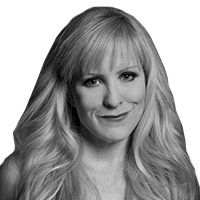Archive
Everett Collection Historical / Alamy Stock Photo
Presidential Sunglasses Through the Decades
COOL
Just in time for the sunny patriotic holiday, here are the last 13 U.S. presidents who donned sunglasses since the rise of their popularity.

Trending Now
Crime & JusticeUnshaven Luigi Mangione Shows Signs of Stress in Court
Crime & JusticeLuigi Mangione Judge Married to Former Healthcare Exec




